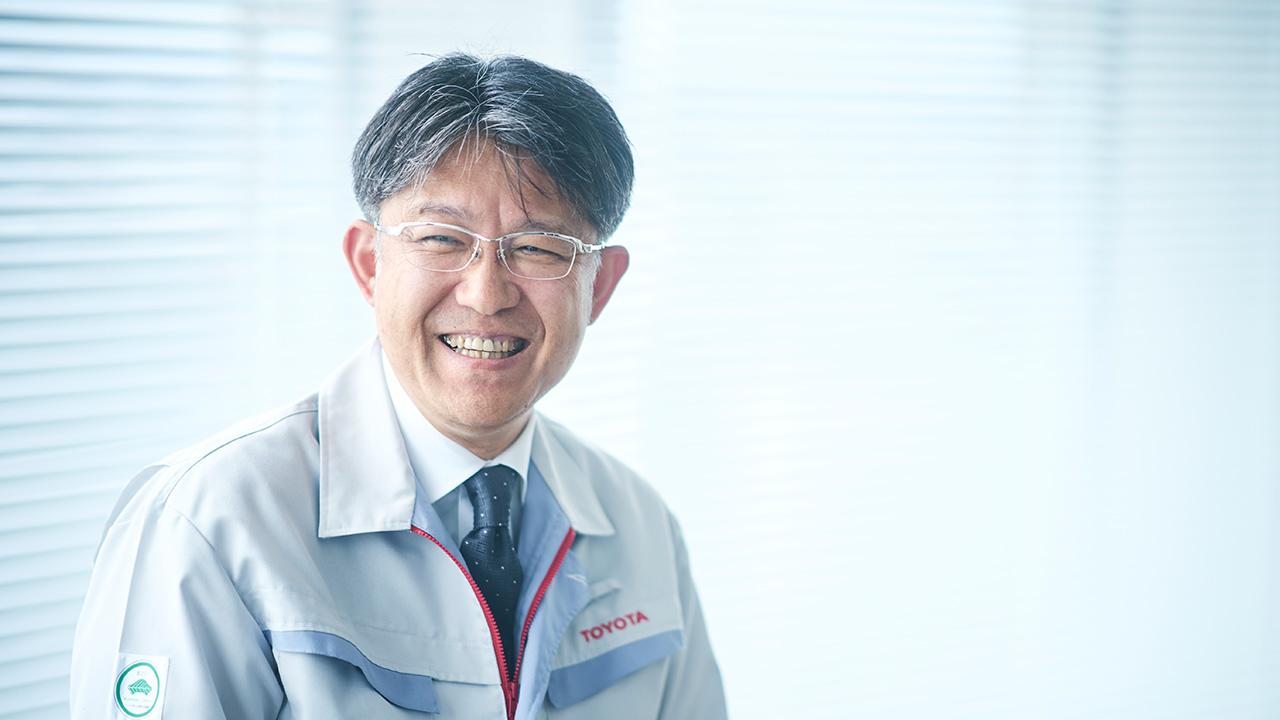
Automotive analyst Shinya Yamamoto goes one-on-one with this year's trio of newly appointed presidents. In this first installment, President Koji Sato delves into his life as a "Toyota man."
Putting a smile on Morizo’s face
Eventually, Sato moved into product planning, the heart of carmaking. The first model he worked on was the Camry.
Even so, initially, my main duties consisted of inputting parts data into the computer, preparing certification documents, and washing test vehicles.
On the other hand, working up from the bottom like that showed me that every CE has a different approach to making cars. I sensed that a purpose and philosophy are important in creating something distinctively captivating.
Sato assisted the CE of the third-generation GS as Project General Manager. At that point, however, the GS was a contentious subject within the company, sparking discussions over how development should proceed and whether a third generation was really necessary.

Before it even went up to the president, the proposal already had a couple of X’s, and we received instructions to stop development.
Despite that, President Akio acknowledged the genba’s passionate commitment to getting this car out there. He told us, “If you’re so set on this, then go for it. In return, make sure it drives well enough to put a smile on Morizo’s face.”
Until then, President Akio had been a distant presence, but with this, I began trying to create cars that would make Morizo smile.
The GS that Sato helped build premiered in 2011 in Pebble Beach, California. Despite the team’s confidence, North American journalists assessed that “Lexus is boring.”
We gritted our teeth, worked hard on the driving, did everything we could, and that was the verdict.
But in retrospect, while we had done our best within the preconditions we set for ourselves, that’s not the way to compete on the global stage.
Lexus’s turning point: “Do what can’t be done”
Then, at the 2012 Detroit Auto Show, Lexus pulled the covers off a concept model called the LF-LC.
While this concept design was developed to overturn the GS’s “Lexus is boring” narrative, the response after its unveiling exceeded expectations, prompting Akio to give the green light for commercial release.
When Sato was named as the model’s CE, Uchiyamada’s advice finally turned into reality.

But even though I was CE, I had no staff—it was just me. I prepared the layout myself, but when I paired that design with Toyota’s resources at that point, the result not only failed to meet regulations, it couldn’t even be called a car...
President Akio said, “I’m sorry to say this on your first project as CE, but this car is no good.”
Then he added: “I know this can’t be done at Toyota right now, but that’s why you need to do it. Do what can’t be done—that’s the challenge. You need to start by changing from within.”
In other words, step outside your limits. I think this was a major turning point for Lexus.
Were there any other moments from the LC’s development that stayed with him?
Up to that point, I felt that the problem for Toyota/Lexus was the lack of linearity (continuity) in car movement, particularly in terms of yaw (rotation around the vehicle’s vertical axis). To flesh out that idea, I set about building a preliminary prototype with only sketches and the car I had on hand (LS).
The aim was to verify my calculation that a car’s movements would become more linear with better inertia specs.
I wanted to get President Akio, the master driver, behind the wheel to confirm that our thinking had been right.
Some people objected that it was nowhere near ready, but when President Akio attended the executive workshop at Higashi-Fuji, I practically forced my way in, saying, “I’m Sato from the LC team, and I have something we would like you to drive today.”
The first thing he said upon seeing the prototype was, “Tell me what aspect of this car you would have me evaluate.”
I said, “The gas pedal response is a mess, and the transmission is clunky. All I would like you to see is the connection, the linearity, between how much you turn the wheel and the yaw movement. Is this the kind of car you are looking for as a master driver? That’s all I want to know; just ignore the rest.” He replied, “Alright, got it.”
After the test drive, he told me, "This is the direction we should go,” and that’s what we committed to in developing the LC.
The LC arrived in 2017, and its reputation speaks for itself. Six years on, the car’s beauty, driving performance, and presence remain entirely undiminished.

